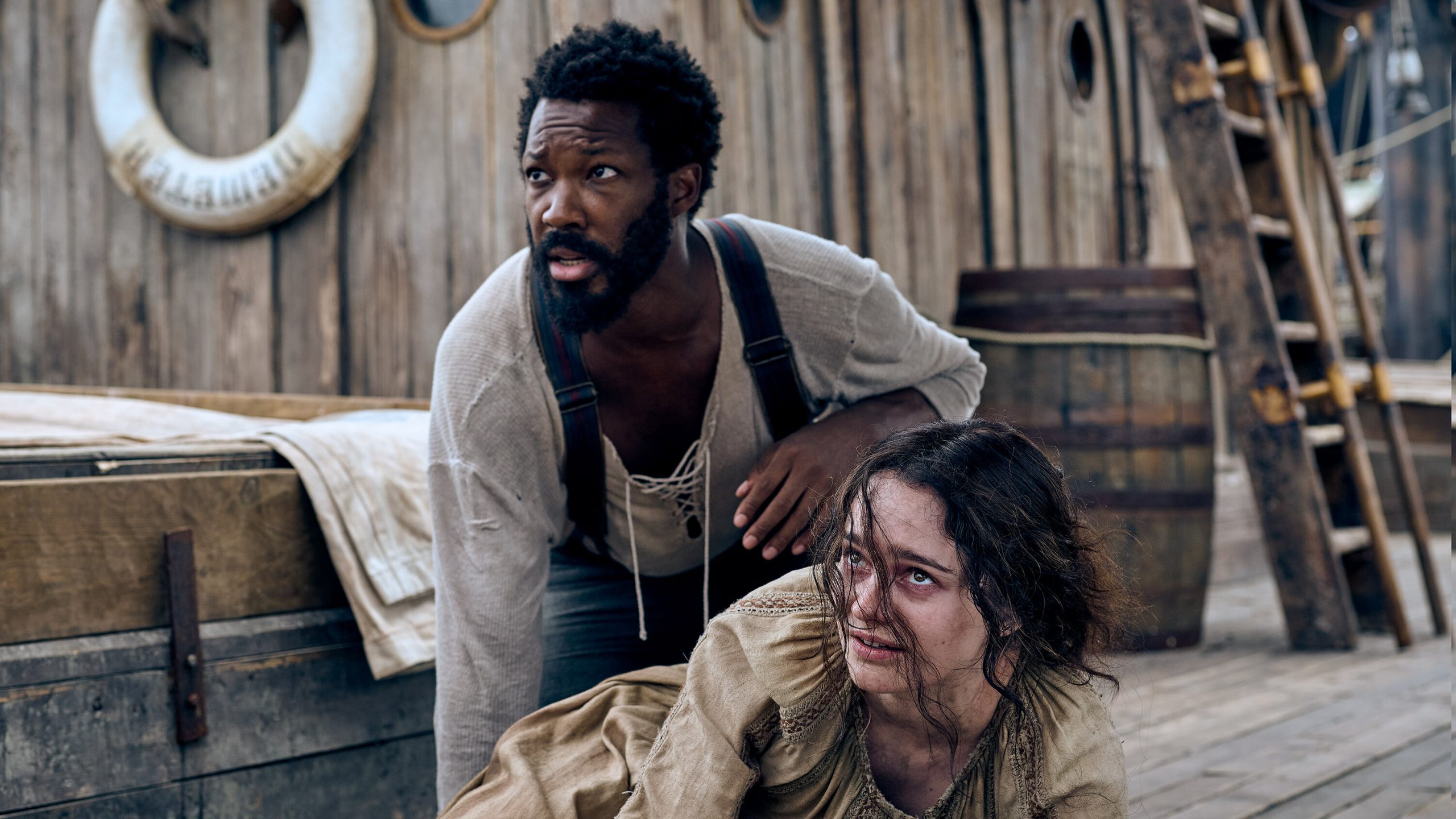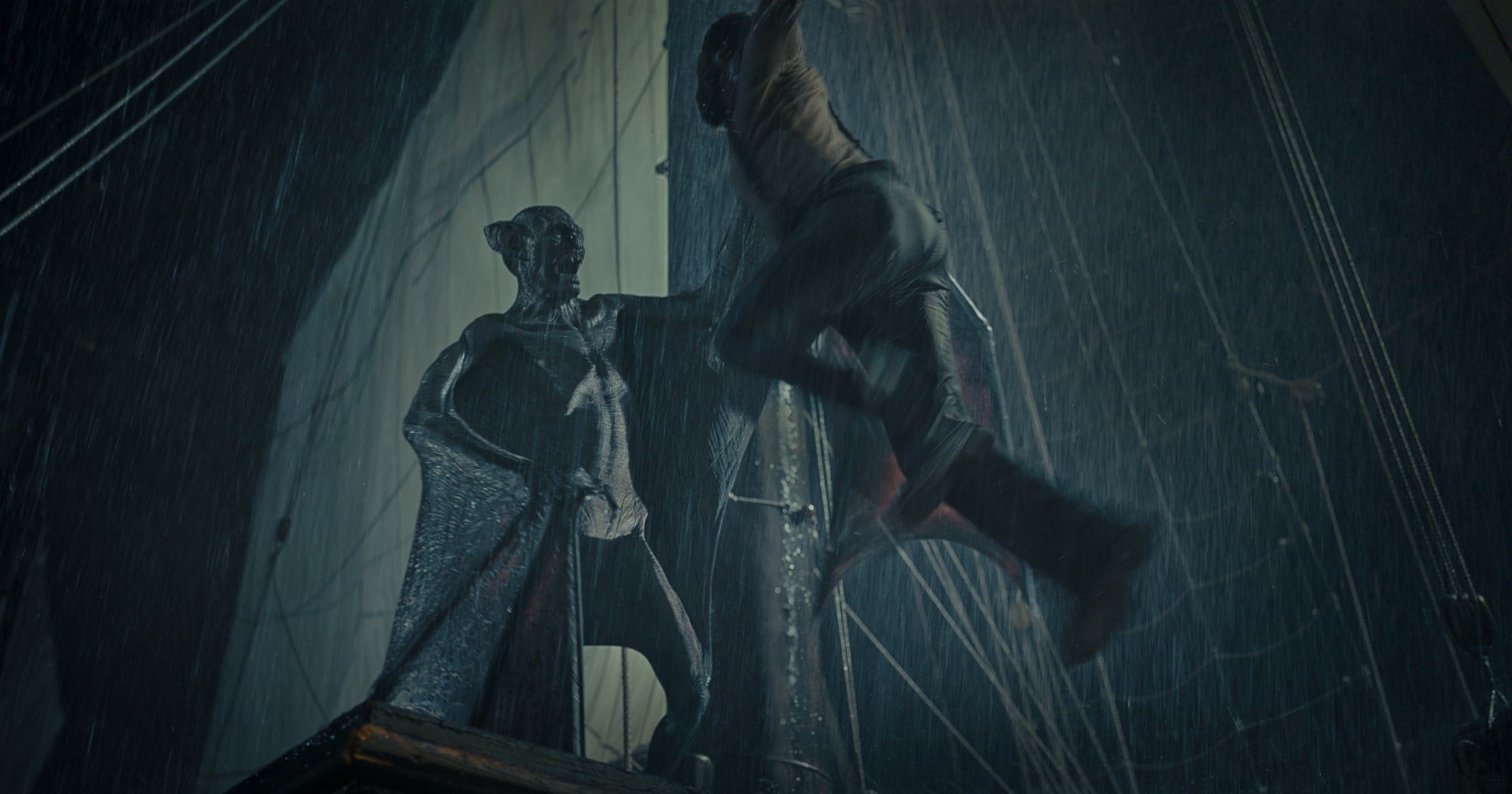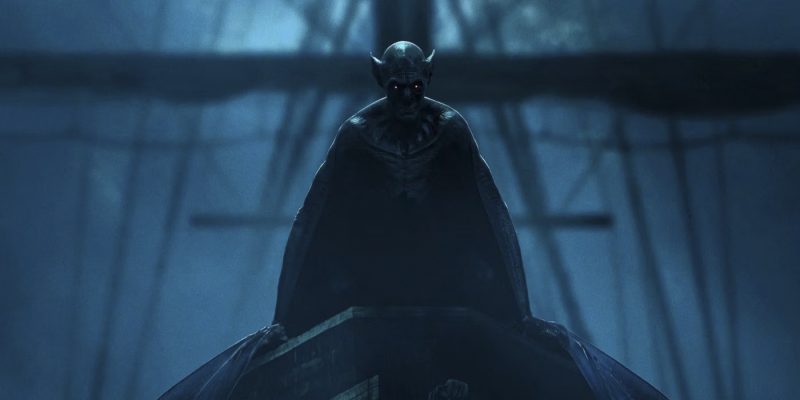As someone who writes about horror cinema and its history, one of my recent complaints has been the gradual depreciation of the vampire theme. Audiences have become saturated with zombies, vampires, and especially werewolves. Because all the new releases, whether films or series, seem to be copies of each other, they no longer manage to evoke fear or captivate the audience. However, “The Last Voyage of the Demeter” is a remarkably impressive project that revitalizes the long-suffering vampire theme, and even more importantly, it successfully returns to its roots. I am confident it will be remembered for many years to come.
In brief, let’s touch upon the plot… We are guests to the captain’s logs of the Demeter, in the midst of Bram Stoker’s famous novel “Dracula.” In these logs, the captain describes the strange occurrences on board during the journey, the crew members who mysteriously vanish one by one, and the fear that looms over them at night. The film faithfully adheres to the captain’s journal, vividly recounting the events that transpire on the Demeter and bringing a brief but terrifying episode of a horror classic to the big screen.

Shudder’s 2021 documentary, “The Found Footage Phenomenon,” claims that Bram Stoker’s novel was the first example of found footage horror. They are not entirely wrong. Bram Stoker’s narrative technique, building the story through his characters’ diaries, technically qualifies it as found footage. The film also utilizes this theme quite effectively. It not only translates the captain’s journal directly to the screen but also adds depth to the story by occasionally having Liam Cunningham read certain parts of the diary with his incredible voice.
The captain’s journal in the book is perhaps one of the most chilling sections of the entire novel. While it may not surprise us, readers, what the strange entity is, causing the crew members to disappear one by one and witnessing things they cannot combat, it certainly leaves the captain and the crew baffled. They remain uncertain about what they are grappling with, and to make matters worse, stranded in the middle of the ocean, they cannot replace the lost crew members. The film daringly translates this fear-laden journey to the silver screen. Starting with a mysterious beginning, the film gradually begins to fearlessly reveal the nightmarish creature that descends upon the ship. The tension in the film escalates with the appearance of this creature. Both the crew and the audience see the creature plainly, but there is no escape in the middle of the sea.
André Øvredal is a director I avidly follow. He has a knack for infusing tension into his films, building it slowly but effectively. He accomplishes this task quite masterfully. In both narrative treatment and visual execution, the film is highly successful. While the visual design of Dracula may seem somewhat cheap, it doesn’t significantly detract from the overall experience. While many Dracula projects attempt to depict the character as a handsome gentleman, André Øvredal’s Dracula exudes the grotesque allure of Nosferatu, embracing the kind of terrifying essence that suits the character perfectly. What’s even more captivating is that he generally moves like a wild animal despite incorporating some human qualities into Dracula. When driven by his hunger, he becomes an unstoppable force. This duality serves as both an advantage and a disadvantage.

One of the most significant challenges in recent projects is the overshadowing of storytelling by the woke perspective. Characters are added, removed, or even changed arbitrarily, sometimes without any apparent relevance to the narrative. The solution to this issue is actually quite simple. As long as the story remains intact and does not compromise its authenticity, no one will be preoccupied with the races and colors of the characters. “The Last Voyage of the Demeter” stands as one of the finest examples of this approach. The character Clemens (Corey Hawkins), although originally absent from the story, seamlessly fits into the narrative and adds depth through his role as a doctor. Similarly, Anna (Aisling Franciosi), despite not being part of the classic narrative, does not fundamentally disrupt it and contributes to the story by playing a crucial role in the tension built around superstitions. Liam Cunningham’s portrayal of Captain Eliot might be the film’s best casting choice. Additionally, seeing David Dastmalchian in the film brought me joy. This year, I had the chance to watch him in “The Boogeyman,” and he is undeniably one of the actors who fits perfectly in recent films.
In conclusion, “The Last Voyage of the Demeter” is an enjoyable horror film that returns to the roots of vampire tales and masterfully presents the most terrifying aspects of the genre on the big screen. While there are some minor additions to the story, the core elements remain unchanged and even gain depth. André Øvredal once again proves that he is one of the prominent figures in horror cinema and that he keeps surpassing himself with each new film. Returning to the basics of the classic creature theme at a time when it has lost some appeal in cinema might have been the best choice. After a long time, we have had the chance to watch a horror film that is filled with fear and horror at every turn.

Cast & Crew
director: André Øvredal
writers: Bragi Schut, Zak Olkewicz, Bram Stoker
starring: Corey Hawkins, Aisling Franciosi, Liam Cunningham, David Dastmalchian
USA – GERMANY – UK – INDIA | 2023 | 119 MINUTES |
